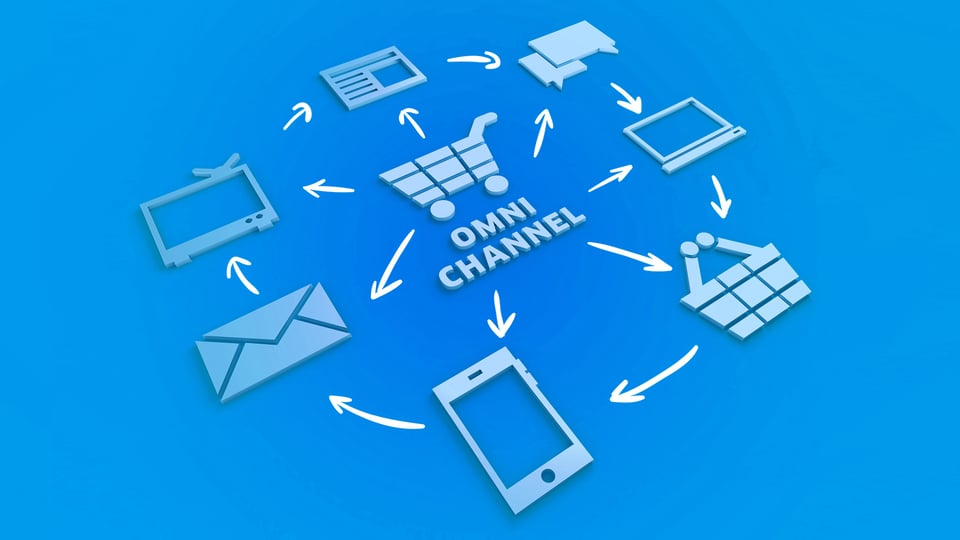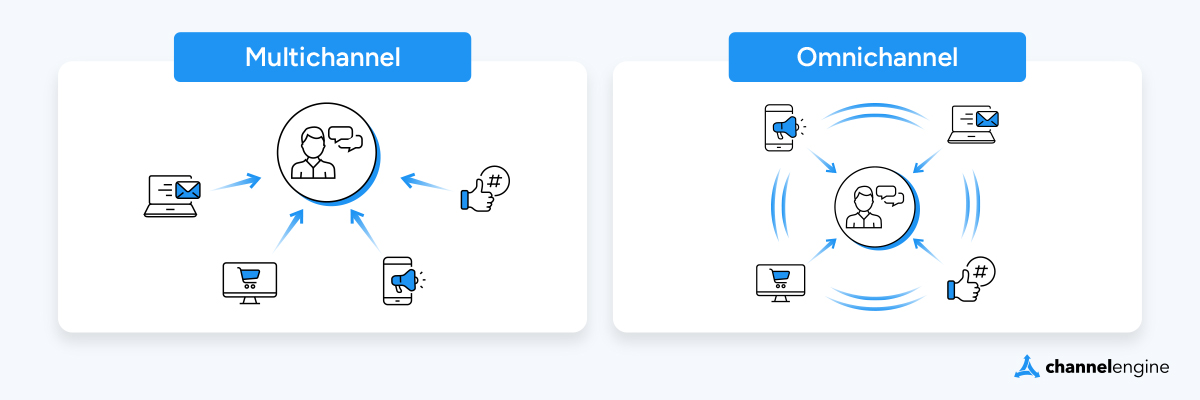What is omnichannel ecommerce: A must-know for modern businesses

Omnichannel ecommerce is a holistic approach to sales, marketing, and customer support that provides a seamless shopping experience across all platforms.
Read on to learn more about omnichannel ecommerce, its benefits for consumers and businesses, and how brands can build a successful omnichannel strategy.
What Is Omnichannel Ecommerce?
Omnichannel ecommerce is a retail strategy that aims to provide a cohesive customer experience across all channels, whether customers shop online, in-store, or on a mobile device.
It could be providing the same products, pricing, and messaging across all channels a customer uses to interact with your brand and ensuring your website, mobile app, physical store, and social media all deliver a consistent shopping experience.
Let’s say a customer’s journey starts when they click on a social media ad, which takes them to your website, where they begin to browse. They find a product they want to purchase but don't want to wait a week for it to be shipped, so they pick it up in-store. When they arrive at the store, a sales associate suggests additional items that complement their online purchase.
That is one example of how omnichannel ecommerce presents opportunities to increase average order value and provide an enhanced customer experience across all touchpoints in their journey, which drives customer loyalty and profitability for the retailer.
An omnichannel strategy focuses on the entire customer experience and regardless of where your customers are shopping, your products, offers, and customer support are only a click, email, direct message, or phone call away.
Omnichannel vs. Multichannel Ecommerce

It's easy to confuse omnichannel with multichannel ecommerce, but they are not the same. With a multichannel approach, you're giving customers access to your brand through various channels, but these channels are not connected. With an omnichannel strategy, the multiple channels are cohesive, so customers can move seamlessly from one medium to another.
Then end goals for multichannel and omnichannel are different:
- Multichannel: You want to reach as many potential customers as possible by having a presence on multiple channels.
-
Omnichannel: You want to create the best possible customer experience by syncing all your retail channels to make the shopping process smooth, effortless, and consistent.
Multichannel could entail having a website, Instagram, and blog, and each used to connect with customers. Still, the messaging and experiences are inconsistent from one channel to the next.
“Omni" means "all," so omnichannel accounts for all the different devices, channels, and platforms consumers use today. It ensures that you're not only selling on multiple marketplaces, but that your prices, product listing content, and brand assets are consistent.
What Are the Benefits of Omnichannel Commerce?
Enhanced Customer Experience
As the amount of customer touchpoints increases, so does the need to make it seamless from one touchpoint to the next. Integration with your social media, mobile push notifications, chatbot, emails, etc., is key for creating a better customer experience.
When customers can interact with your brand the way they want, using the methods they are most comfortable with, they will be more satisfied at every point in their journey.
Increased Sales
Omnichannel increases sales by making it easier for customers to buy from your business.
Let’s say a customer is browsing on a retailer’s website and sees a dress they like but wants to try it on in-store before buying. They check online to see if the nearest store has their size in stock. If yes, and the dress fits, the sale is a sure thing.
If the dress size is not in stock, with an omnichannel marketing approach, the next step would be to kickstart a custom retargeting campaign. Now that customer can receive emails, alerts, and display ads informing them when the item becomes available.
When shoppers can access product information easily, it results in a more effective retail model with omnichannel customers spending more money than single-channel customers.
Collect Customer Data
The omnichannel ecommerce approach allows you can collect and merge data from multiple channels to get a complete picture of who your customers are, their behavior, and what they want.
These valuable insights can be used to enhance marketing efforts and give your brand the ability to create and provide an even more personalized customer experience.
How Brands Can Build a Winning Omnichannel Ecommerce Strategy
Decide Which Channels You Will Cover
Having a clear understanding your customers’ behavior is crucial in determining which channels to be on. Remember that omnichannel is not only about being on the proper channels; it's the ability to integrate all channels to create an experience that best serves your shoppers.
Ensure your marketing is omnichannel
After deciding which channels to cover, you’ll need to have omnichannel marketing strategies in place to ensure your audience is engaged on all of your chosen channels. This starts with analyzing how customers find you, how they interact with your brand, their purchase behavior, and so on.
When you know your shoppers well, the next step is customer segmentation, so you can target the right campaigns to the right customers at the right time in their journey.
Personalizing content per channel plays a big part in omnichannel marketing. For example, a push notification must convey your message in as few words as possible, whereas an email campaign can deliver more compelling copy.
Retargeting is also essential for omnichannel marketing. A customer may not buy at first sight, so displaying relevant banner ads on different platforms puts the product top-of-mind again to help drive conversion.
Get the Right Software
Once you have your omnichannel ecommerce strategy in place, you’ll need software to manage sales and ecommerce operations across various channels.
Omnichannel commerce platforms sync all online and offline stores, including your brick-and-mortar, website, mobile app, social media shopping tab, and other online marketplaces, such as Amazon.
Marketplace integration software, like ChannelEngine, integrates with multiple ecommerce platforms on the backend, so retailers and brands can sell their products to millions of consumers worldwide while boosting online visibility and increasing revenue.
There are also headless commerce platforms that act as a decoupled frontend and backend system linked via APIs (application programming interfaces), like Shopify Plus and NetSuite Commerce.
Whichever omnichannel commerce platform you pick, integration of all your ecommerce systems is what's most important, plus the ability to manage, monitor, and optimize sales and operations across all channels from one simple dashboard.
Why not take the next step today? Schedule a call with one of our ecommerce experts!


